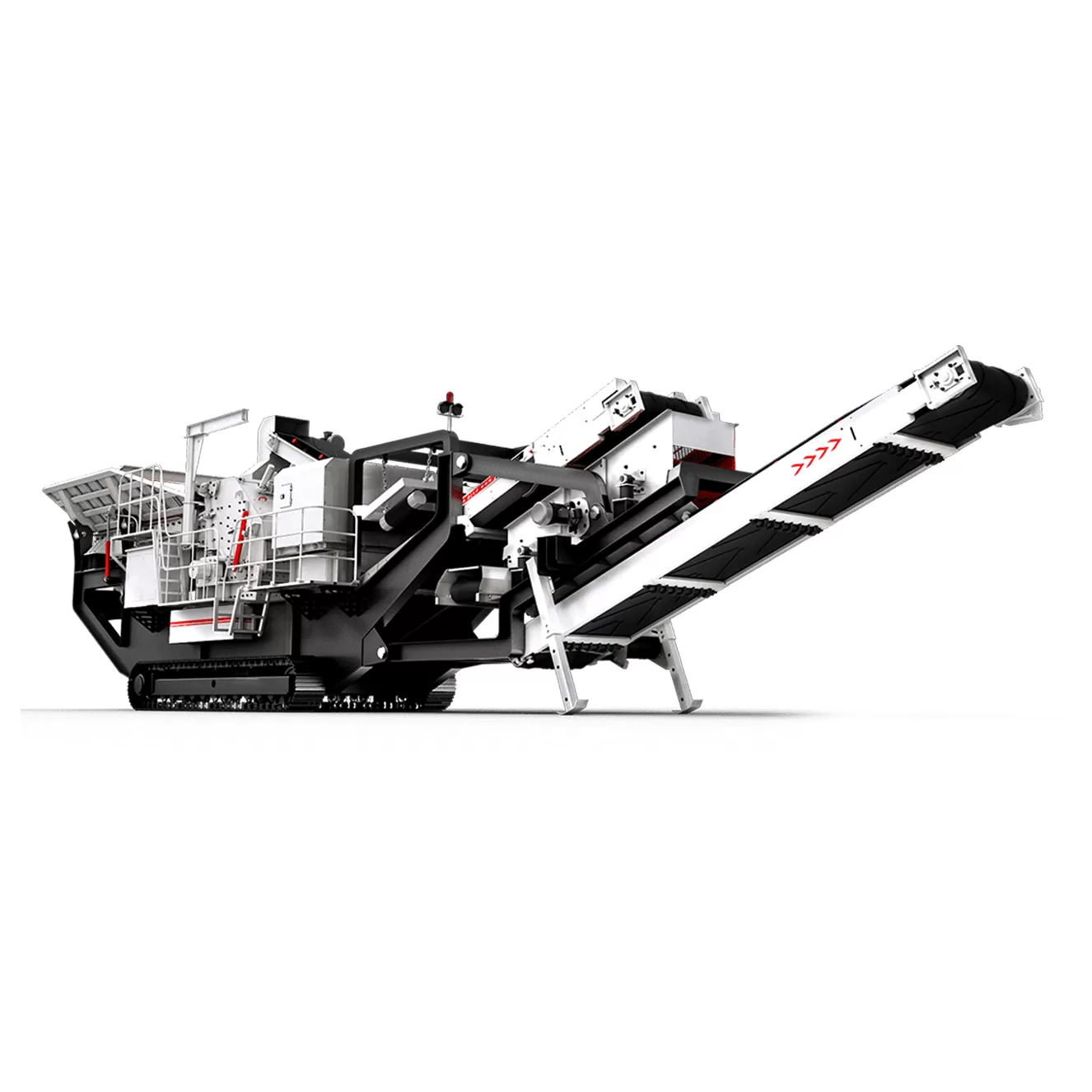全站搜索
Pesquisar em todo o sítio Web
Pesquisar em todo o sítio Web
This machine mainly consists of hopper, vibrating feeder, primary crushing equipment, conveyer belt, multilayer screen, medium crushing equipment, fine crushing equipment, movable belt conveyor, sand washer & washing apparatus and electric controlling equipment.
A track-mounted impact crusher uses high-speed blow bars to strike material, causing it to shatter along natural fissures. Mounted on tracks, it moves easily around sites, ideal for secondary crushing, aggregate shaping, and recycling applications like concrete and asphalt.
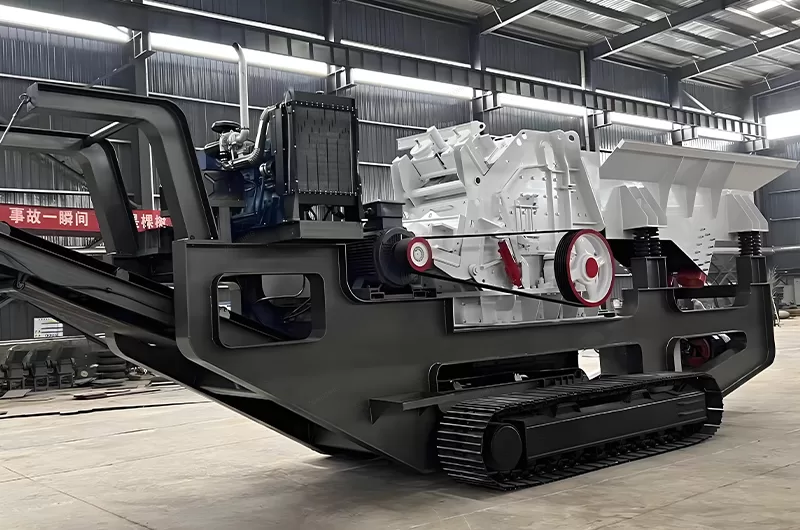
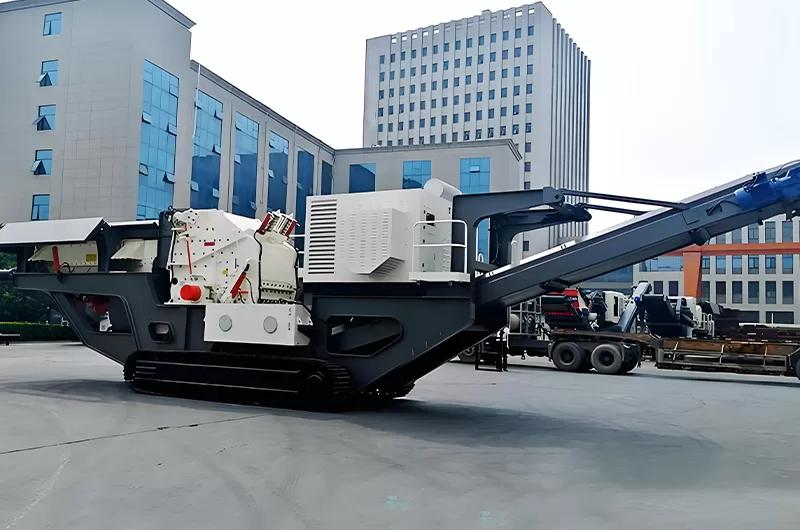
This machine combines the crushing principle of an impactor with the go-anywhere capability of a tracked chassis. It’s a vital tool for many aggregate producers and recycling operations. ZONEDING MACHINE builds robust track impactors designed for performance and reliability in demanding conditions.
A track-mounted impact crusher uses a rotor with blow bars spinning at high speed to strike feed material. This differs from jaw crushers (compression between plates) and cone crushers (compression within a cavity), resulting in different product shapes and suitability for various materials.
Inside an impact crusher (also known as HSI – Horizontal Shaft Impactor), material enters the chamber and meets a fast-spinning rotor fitted with blow bars (hammers).
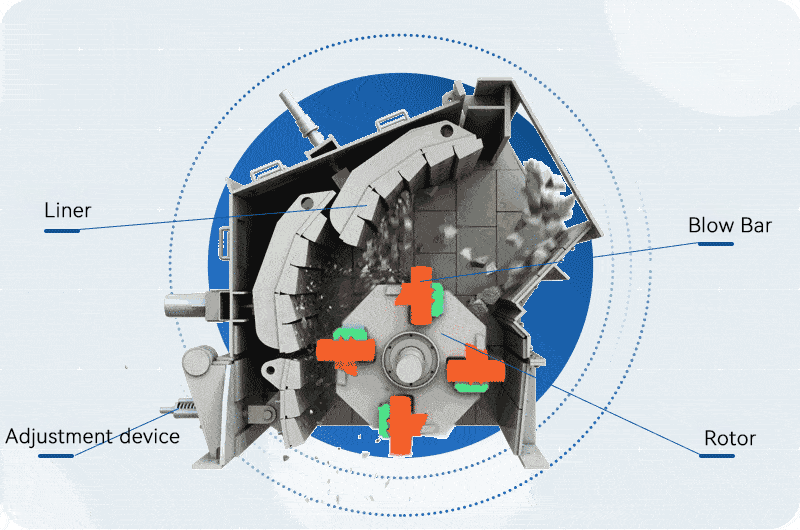
| Caraterística | Track-Mounted Impact Crusher (HSI) | Track-Mounted Jaw Crusher | Track-Mounted Cone Crusher |
|---|---|---|---|
| Crushing Action | High-speed impact, rebound, attrition | Slow compression | Compression and grinding |
| Typical Stage | Secondary, Tertiary, Recycling (Primary for soft rock) | Primary | Secondary, Tertiary, Quaternary |
| Feed Material | Medium-hard to soft rock, C&D waste, asphalt | Hard to medium-hard rock, large feed | Hard to medium-hard abrasive rock |
| Product Shape | Excellent (Cubical) | Generally Flaky | Good (Cubical, but less than HSI) |
| Reduction Ratio | High (can be, material dependent) | Moderate | Moderate |
| Wear Parts Cost | Higher (Blow bars, impact plates) | Lower (Jaw plates) | Moderate (Mantle, concave) |
| Fine Generation | Can be higher | Inferior | Lower to Moderate |
| Sensitivity | More sensitive to abrasive material & feed | Less sensitive | Sensitive to feed segregation |
Impact crushers when product shape (cubicity) is critical, or for recycling applications.
Jaws are for primary breaking of large, hard rock.
Cones are excellent for secondary/tertiary crushing of hard, abrasive materials.
The core advantages are its self-propulsion (tracked mobility) for easy on-site relocation and its impact crushing principle, which excels at producing highly cubical aggregates and efficiently processing recycled materials like concrete with rebar.
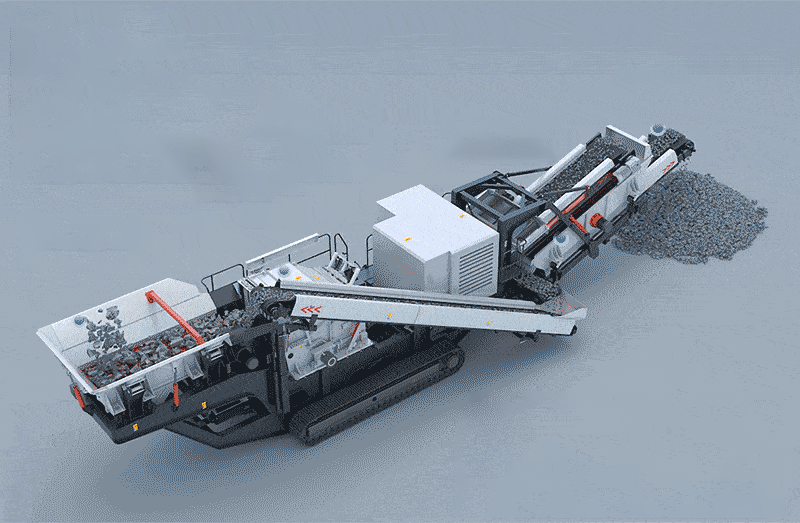
Like its tracked jaw and cone counterparts, the track-mounted impact crusher eliminates the need for:
This drastically reduces setup time and internal haulage costs, allowing the crusher to follow the material source or move easily between stockpiles. ZONEDING track units for reliable and efficient movement.
The impact method offers distinct benefits:
These advantages make track-mounted impact crushers a preferred choice for final stage crushing in aggregate production and a primary tool in recycling yards.
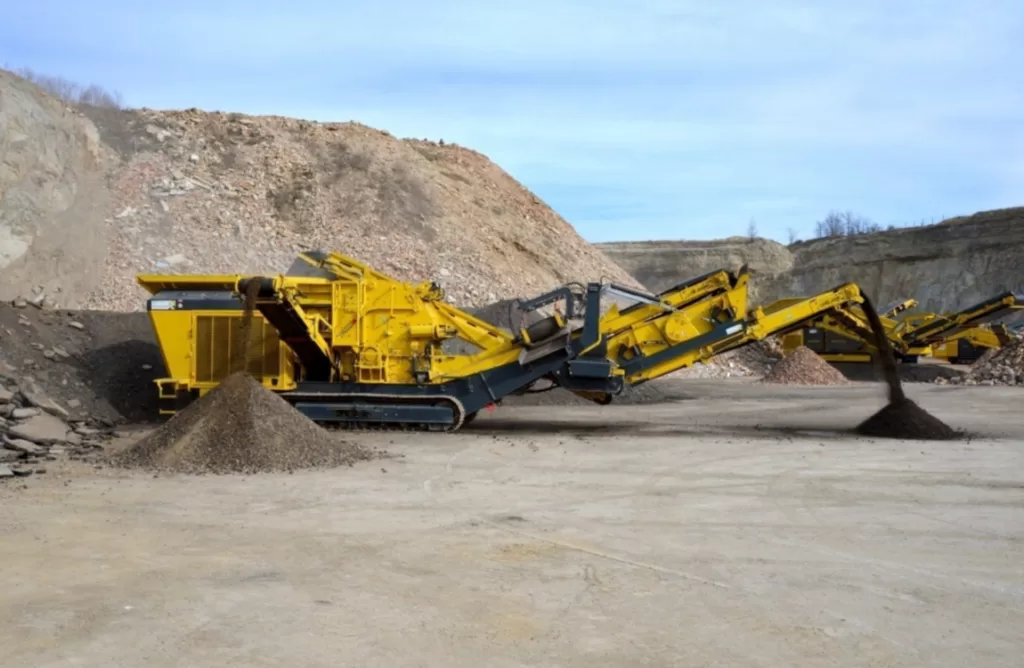
Track-mounted impact crushers excel with medium-hard to soft, non-abrasive rock (like limestone, dolomite, gypsum) and are highly effective in recycling concrete (including reinforced) and asphalt pavement due to their ability to produce good shape and handle contaminants.
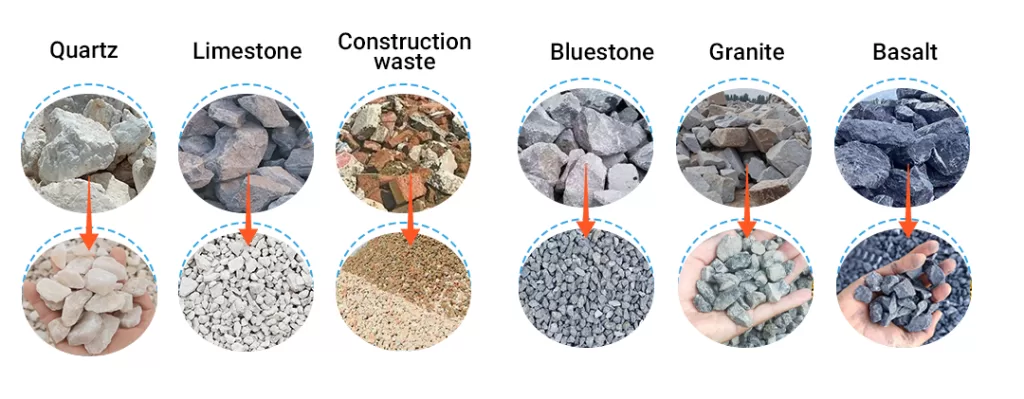
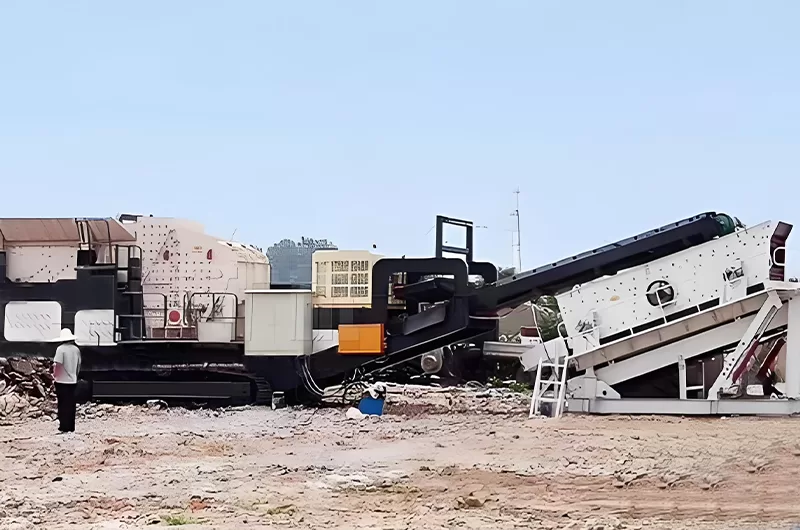
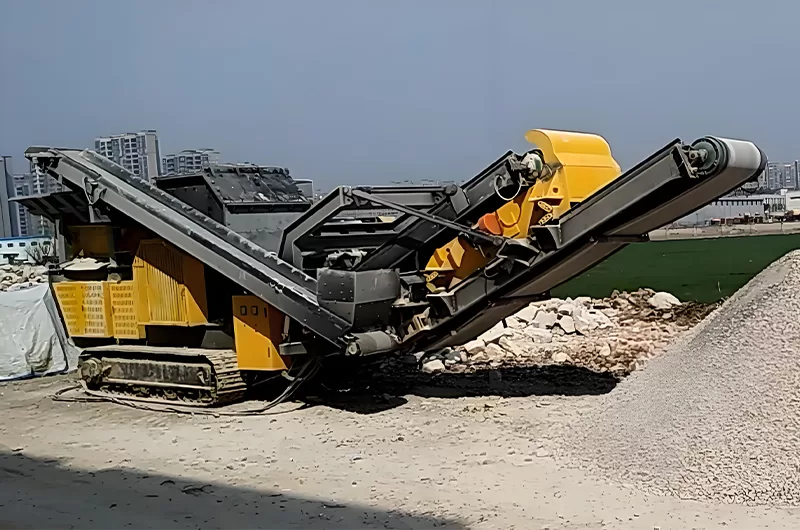
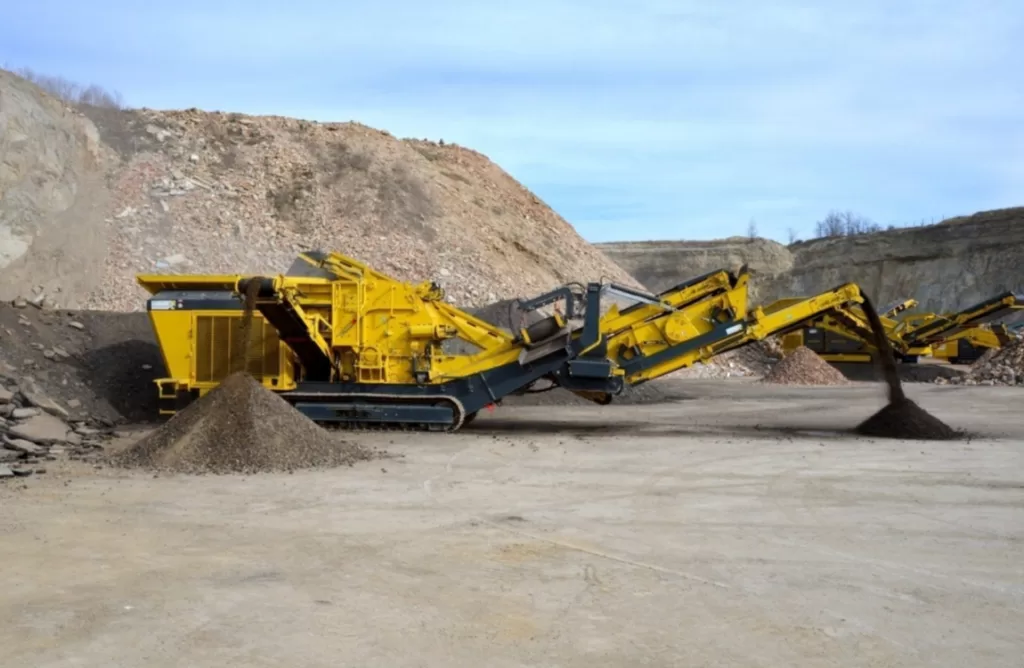
Crucial parameters include rotor diameter and width, maximum feed size, throughput capacity, engine power, CSS/apron adjustment range, transport weight/dimensions, and optional configurations like pre-screens, magnetic separators, and closed-circuit screens with return conveyors.
| Modelo | ZDM938F1210 | ZDM938FW1214 | ZDM1149F1315 | ZDM1349HD1110 | ZDM1349HD1315 |
| Transportation Length(mm) | 12000 | 12000 | 13900 | 15450 | 15450 |
| Transportation Width(mm) | 2550 | 2550 | 2900 | 2950 | 2950 |
| Transportation Height(mm) | 3900 | 3900 | 4450 | 4500 | 4500 |
| Maximum Length(mm) | 12500 | 12500 | 13900 | 15450 | 15450 |
| Maximum Width(mm) | 3250 | 3260 | 3250 | 3250 | 3250 |
| Maximum Height(mm) | 5100 | 5200 | 5200 | 5200 | 5200 |
| Weight(t) | 39 | 44 | 54 | 62 | 62 |
| Crusher Model | PF-1210 | PF-1214 | PF-1315 | HD1110 | HD1315 |
| The Maximum Feeding Size(mm) | 350 | 350 | 500 | 400 | 700 |
| Production Capacity(t/h) | 70-130 | 100-180 | 130-250 | 112 | 280 |
| Vibrating Feeder | ZSW950×3800 | ZSW950×3800 | ZSW110×4900 | ZSW130×4900 | ZSW130×4900 |
| Main Belt Conveyor | B800×8.5M | B800×8.5M | B1000×9.5M | B800×11M | B1200×11M |
| Side-opening Belt conveyor(Optional) | B500×3.2M | B500×3.2M | B650×4M | B650×4M | B650×4M |
| Genset(Optional) (kw) | 320 | 320 | 400 | 320 | 440 |
| Iron Separator (Optional)(kw) | RCYD(C)-8 | RCYD(C)-8 | RCYD(C)-10 | RCYD(C)-8 | RCYD(C)-12 |
Track-mounted impact crushers are versatile tools for producing quality aggregates and recycling materials. ZONEDING MACHINE offers reliable, customizable solutions.
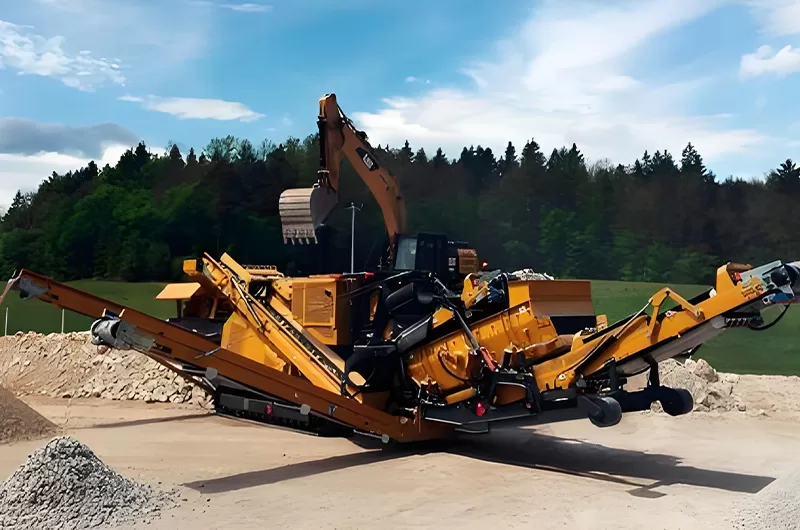
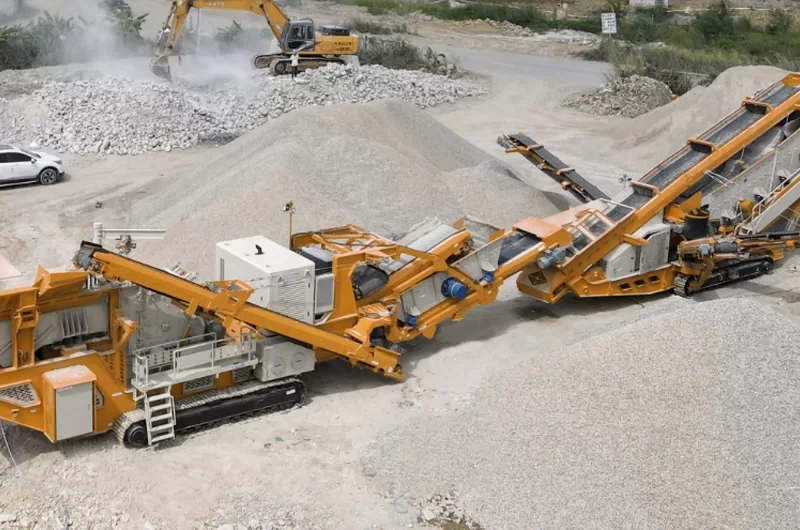
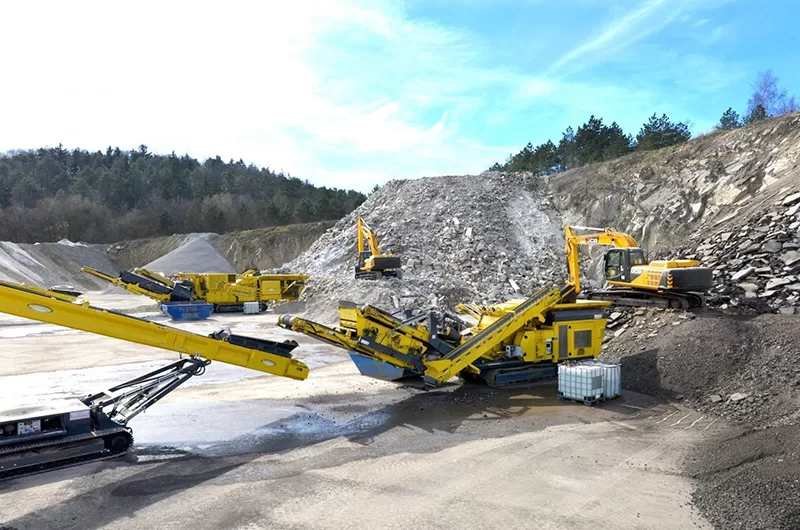
A seleção depende das caraterísticas do material (tamanho máximo de alimentação, dureza, abrasividade), do rendimento necessário (tph), do tamanho de saída desejado (CSS), da potência disponível do motor e do orçamento. Uma análise cuidadosa garante um desempenho ótimo e rentável.
A instalação correta requer uma base robusta e nivelada e um alinhamento preciso. O funcionamento correto envolve verificações prévias minuciosas, arranque em vazio, alimentação uniforme controlada, evitar sobrecargas/agitação e seguir a sequência de encerramento adequada.
As verificações diárias incluem fixadores, lubrificação e inspeção visual das peças de desgaste. A manutenção regular envolve inspecções mais profundas e assistência a componentes. Prolongar significativamente a vida útil da placa da mandíbula através de uma seleção adequada do material, alimentação uniforme, pré-seleção e rotação ou inversão estratégica das placas.
As falhas mais comuns incluem paragens súbitas (estrangulamento), redução da produção, problemas na placa da mandíbula, sobreaquecimento dos rolamentos, vibração excessiva e quebra da placa de alternância. A resolução de problemas envolve a identificação sistemática de causas como bloqueios, desgaste, peças soltas ou definições incorrectas.
As britadeiras de maxilas são excelentes para a britagem primária de materiais grandes e duros devido à sua robustez. Trituradores de cone são mais adequados para a britagem secundária/terciária de rocha dura, oferecendo maior redução e melhor forma. Trituradores de impacto produzem um excelente produto cúbico, mas desgastam-se muito mais rapidamente em rochas duras e abrasivas.
